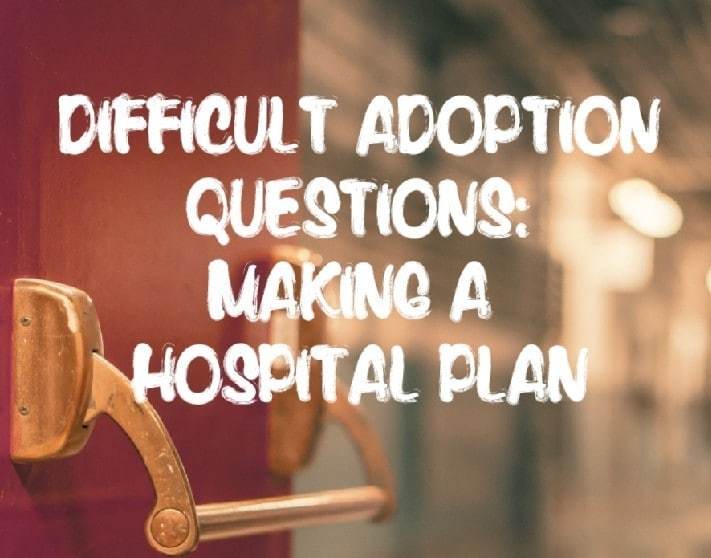
DIFFICULT ADOPTION QUESTION: MAKING A HOSPITAL PLAN
- September 13, 2016
- Gift of Life Adoptions
- Adoption News
- No Comments
As we mentioned in our last post, the time at the hospital can be physically and emotionally overwhelming. That’s why we always try to make a hospital plan with our birth parents ahead of time.
Creating a hospital plan allows you to talk about what certain things you envisioned for this process, as well as what emotions you are concerned will come up while you are at the hospital. We even help you write the plan out. We find that it often helps to have the plan in a tangible form you can hold.
The hospital experience is typically done in 3 stages.
The first stage is when you and your caseworker begins to discuss expectations.
We will go over some questions like: Who do you want at the hospital? Do you want the adoptive parents to be there? Who do you want in the delivery room?
We’ll also ask how you plan to manage your grief and loss? And if you will look to your support system for counseling, or will you want to set that up with Gift of Life Adoptions? These may seem like pretty serious questions, but we ask these questions early on because it brings out the reality of adoption. These questions are also a good way to start the discussion about Gift of Life’s grief and after placement services. We’ll cover these services in greater detail in a future post.
We also discuss that you can take any keepsake you wish from the hospital which can include a hat, crib card, etc. Even if you are uncomfortable asking for these items, please know you can always ask your caseworker to grab them for you.
We also discuss that you are more than welcomed to write the baby a letter or even provide a gift for the baby to take home as well.
The purpose of the first hospital plan is to get you thinking and preparing for your time at the hospital.
The second hospital plan is when you and your caseworker start putting your ideas on paper.
This will include how you will say goodbye to the baby, who will be there, who is in your support system, and what role the adoptive parents will play.
This is also where we will start the conversation about contact with the baby. Who will be doing the feedings and changing? Do you want to name the baby? And we will discuss counseling again.
The final hospital plan is what we call the final plan, surprisingly enough.
This final plan is also provided to the adoptive parents so that they can know what you are looking for from them at the hospital.
We write down the name and some of the details of the hospital you will be delivering at. Some of the details included: What kind of hospital staff you will need discuss your adoption plan with. Some facilities have social workers, while others do not.
What is the hospital policy concerning adoptive couples? Some hospitals have different visiting hours for adoptive parents. We discuss what the adoptive parents will be doing at the hospital as far as visiting, feedings, changes, and the 2nd wrist band.
We will also nail down the details of your interaction with the adoptive couple: Will you be providing a gift for the baby? How will you say goodbye to the baby? To the adoptive couple? The contact you want to have with the baby? What name have you picked for the baby (or maybe you have picked something both you and the adoptive couple both like)?
This typically done a month before delivery, that way you are fully prepared and have a plan!
This is roughly how we create the hospital plan give or take. The one thing to keep in mind is that you can always change some things once you get to the hospital.
These questions are difficult, and may take time to think through. That is why we do the process in stages. You are always welcome to consult our counselor as well, as you think through the emotions of this time.
This time is yours, and we know that, although we have plans, when you are actually there your desires may change. Making a plan with your caseworker ahead of time is a great way to reduce stress and our way to help you remember you’re not alone.
Our next post will share one of our favorite adoption stories that is also a good example of the value of a thought through adoption plan.
